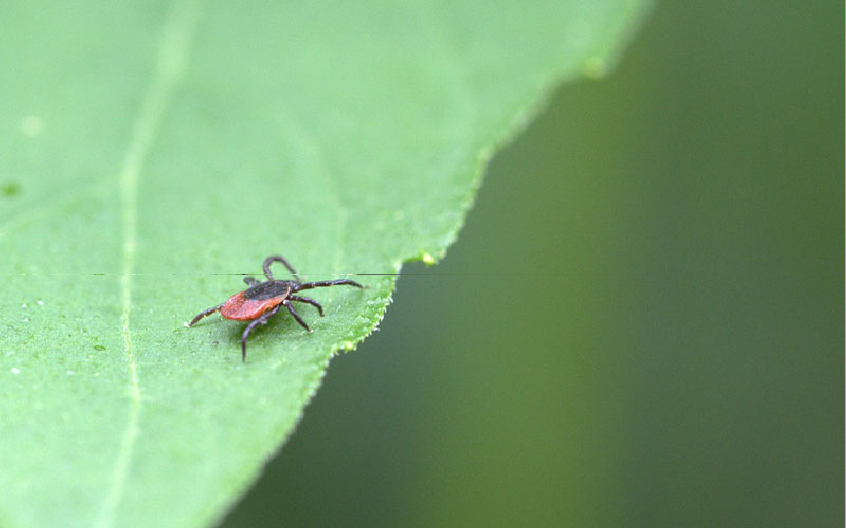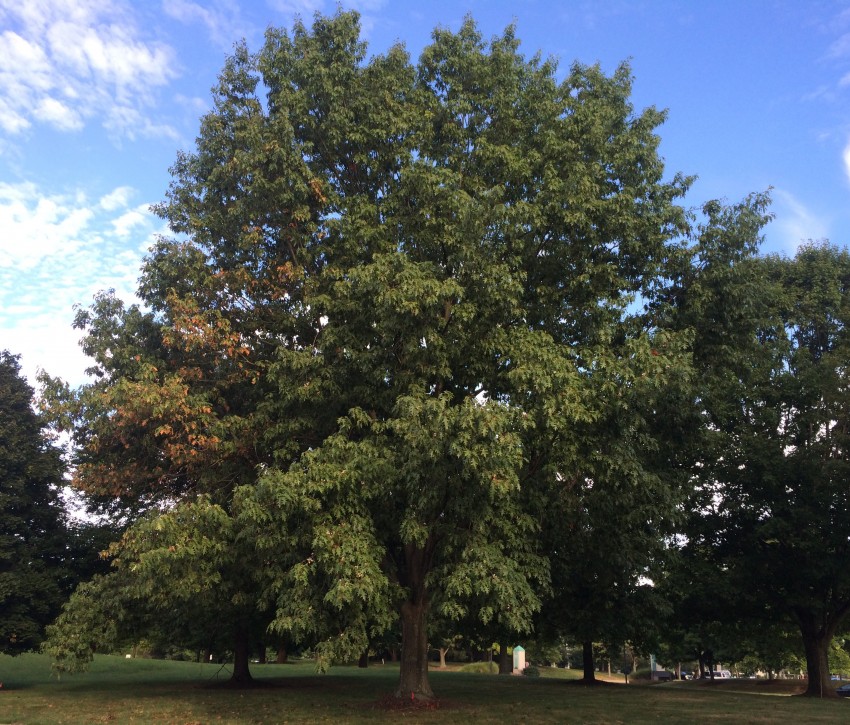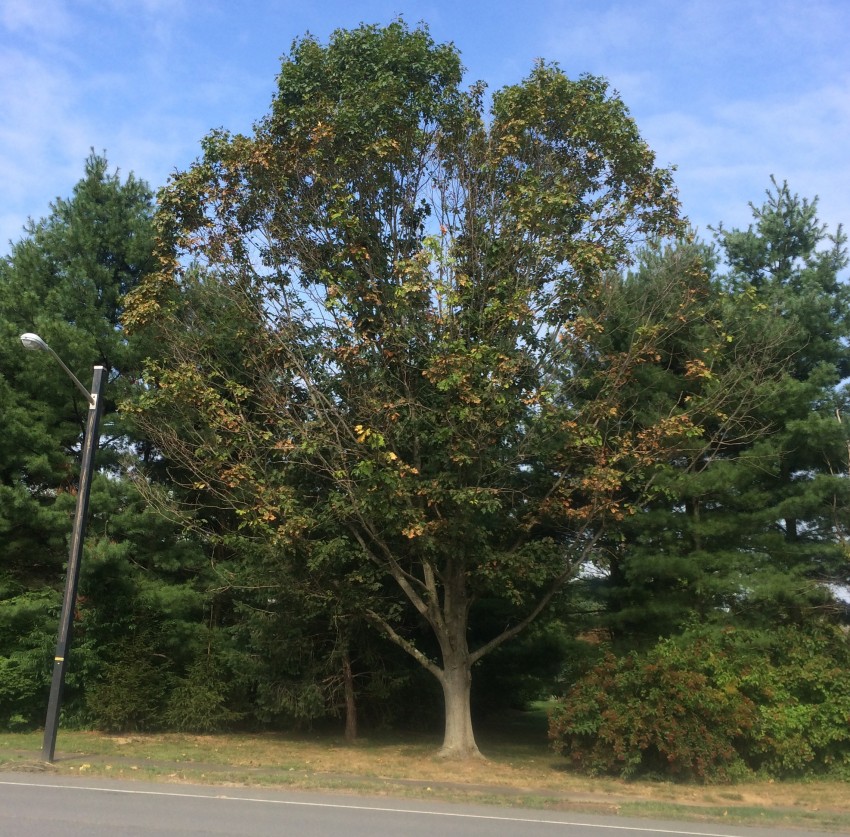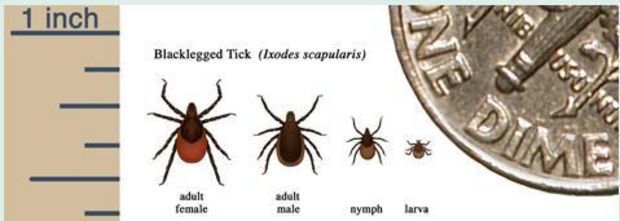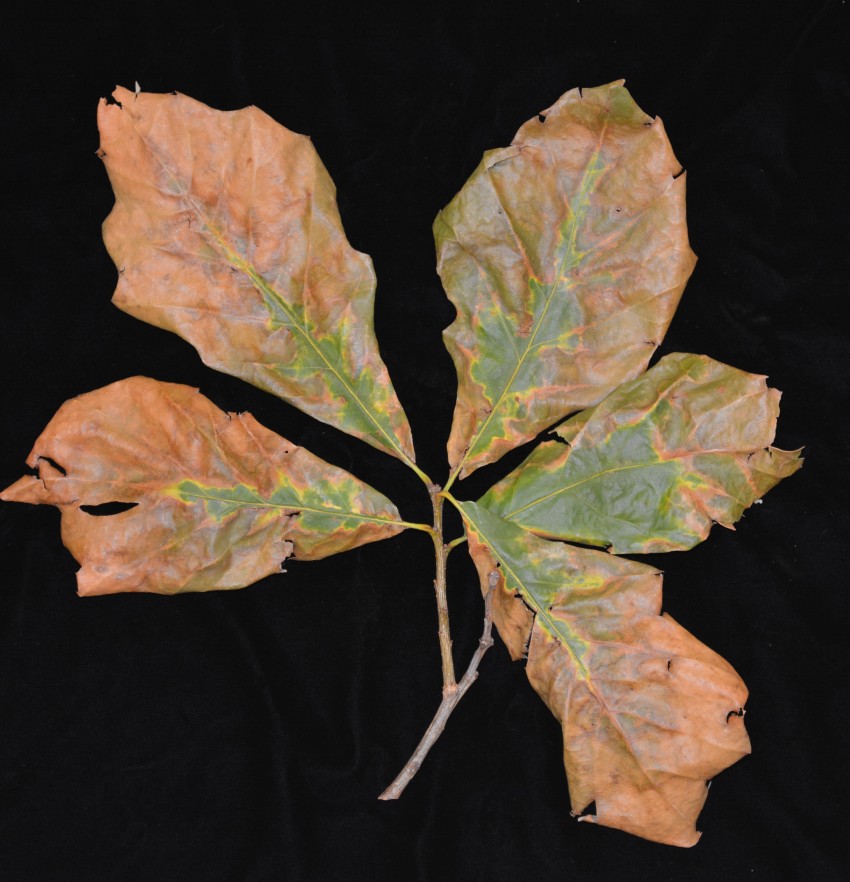Now is the time to monitor for two common diseases of Douglas fir: Rhabdocline needlecast (caused by the fungus Rhabdocline pseudotsugae) and Swiss needlecast (caused by the fungus Phaeocryptopus gäumannii). Rhabdocline needlecast is well established in New Jersey Christmas tree plantations, and Swiss needlecast has become more common. The discriminating grower wants to know, “what’s the difference?”
Disease development is similar, but symptoms and signs are different
There are at least 40 needlecast diseases in the United States; most affect pine, spruce, fir, larch, cedar, hemlock, and Douglas-fir. These diseases are caused by fungi that have only one infection period per year; in most cases (but not all), the new growth is infected by the offending fungus and, once the infection cycle is complete, is eventually cast from the tree (hence the name). The disease process for Rhabdocline and Swiss needlecasts is similar, with a few notable differences.
Symptoms of Rhabdocline needlecast include red-brown lesions that appear during winter on one-year needles. (Look for “islands” of necrosis surrounded by green.) A week or two before budbreak, orange fruiting bodies develop within these spots on the lower needle surface. When the fruiting structures are mature, they rupture and release abundant spores (called ascospores) during wet weather. These spores infect newly expanding needles. Once the needles fully elongate and the weather is warm and dry, ascospores are no longer released, and the needles infected the previous year are cast from the tree. Symptoms on the newly infected needles do not appear until the following fall or winter, and spores are not produced again until the following spring. Once needles are shed, affected branches are thin and trees may be unfit for sale.
| The diseased needles you see today were infected last spring! |
Unlike Rhabdocline needlecast, the fruiting structures produced by the Swiss needlecast fungus consist of rows of very tiny, black fruiting structures that emerge through the stomates of the lower needle surface. Needles affected by the disease may turn off-color or brown, or may even remain green. Spore release from these fruiting bodies begins at budbreak but can continue until August, and it may be several years before fruiting structures are produced in these infected needles to complete the disease cycle.
| Needlecast diseases are enhanced by abundant moisture, high humidity,and poor air drainage during budbreak. Moist weather is good for disease development! |
Cultural management for these two diseases is similar
- Use healthy stock and provide an optimal growing environment.
- Inspect trees during late winter/early spring and look for symptoms and signs. The pattern of infection will likely follow portions of the canopy or field where moisture in the canopy is most abundant.
- Remove sources of inoculum. For best results, remove old and severely infected (30% or more) trees prior to budbreak. Prune severely affected branches during dry weather, and disinfest tools between cuts with rubbing alcohol or household bleach (1 part bleach, 9 parts water).
- Manage the moisture. Choose sites with good air drainage and promote rapid drying of needles through spacing and row orientation. In existing plantations, remove weeds.
- Use resistant seed sources when available. Seed sources that tend to be more resistant include Shuswap and Pillar Lake. Those that are more susceptible include Apache, Cibola, Coconino, Lincoln, Kaibob, and San Isabel; Coville, Santa Fe, and Silver Creek are somewhere in between. Keep in mind that individual trees may vary in resistance or susceptibility.
Chemical controls
For both needlecast diseases, begin chlorothalonil sprays when the first 10% of the trees in the planting first break bud (or the candles are about ½-inch long). Repeat the sprays twice more at 7- to 14-day intervals until needles are fully elongated or until conditions are no longer favorable for disease development. Add an additional spray to control Swiss needlecast when the weather remains wet. For all fungicides, thorough coverage is essential. Unless your product includes a spreader sticker, add one to enhance coverage.
Other compounds labeled for control of one or both of these needlecasts include azoxystrobin, copper (ammonium complex, basic sulfate, cuprous oxide, hydroxide, salts), mancozeb, thiophanate-methyl, and combination products such as copper hydroxide + copper oxychloride (Badge), copper hydroxide + mancozeb (Junction), and chlorothalonil + thiophanate-methyl (Peregrine, Quali-Pro TM/C, Spectro 90 WDG, Tee-1-Up, TM + CTN).
Note: Refer to label for host and application timing and rates. In some instances trade names are used to avoid using long and complicated chemical names. No endorsement of named products is intended, nor is criticism implied of similar products which are not mentioned.

